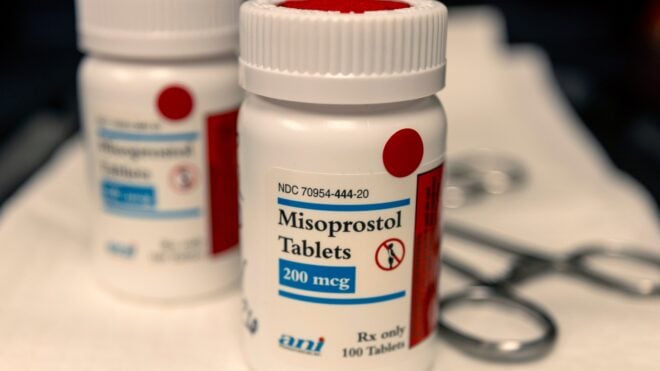
If you're reading this, chances are that you've has some digestive system issues in the past year.
While nausea and vomiting is almost always unpleasant, it's a way that our bodies get rid of substances that are doing us harm.
The Cleveland Clinic explains that "vomiting is the forcible voluntary of involuntary emptying ('throwing up') of stomach contents through the mouth."
Vomiting and nausea are not diseases in themselves, but rather symptoms of accompanying conditions.
While the last thing you want to do is look at your own vomit, its appearance and even taste can tell you a lot about your gastric health.
More importantly, it can signal when you might need serious help rather than just simple rest.
Throw-up comes in many varieties, each of which is usually linked to a specific cause.
Learn what your your vomit color, or texture, or taste might be trying to tell you by reading the guide below.
1. Dry Heaves

Dry heaving isn't exactly vomiting, because you can't regurgitate the contents of your stomach. However, it often accompanies vomiting and feels just about the same.
According to Medical News Today, dry heaving is usually nothing to worry about, and it happens before or after you throw up.
However, isolated dry heaving can be caused by medications, or even anxiety.
Continued dry heaving can do damage to your internal organs and also cause dehydration, so make sure you replenish your fluids when you feel well enough to do so.
2. Blood Streaked

Genarally we expect to see yellow vomit, green vomit, or orange vomit, depending on what we ate most recently. Seeing blood anywhere you don't normally do is always scary. Vomit is absolutely no exception.
The Mayo Clinic clarifies that small amounts of blood in your vomit may be from material you spit up, or from your teeth.
It could also be swallowed from a nose bleed. However, if that doesn't add up, see a doctor right away as the blood might mean you're suffering from internal bleeding.
3. Coffee-Ground Vomit

Coffee-ground vomit doesn't actually have to do with coffee grounds. Rather, it refers to the appearance of vomit.
According to the AARP, a coffee-ground appearance is actually the presence of coagulated blood in your digestive tract. It may look like black vomit.
The dark color occurs depending on how long the blood has been in your stomach. Needless to say, seek emergency medical care immediately.
4. Bile Stained

Vomiting up bile is bitter and extremely uncomfortable.
This green or yellow substance is produced by the liver and stored in the gall bladder, according to Unity Point Health.
You may throw up this bitter substance when there is nothing else in your stomach, or when you suffer bile reflux.
Don't worry if this happens occasionally, but if there is a pattern, see a doctor because bile isn't good for the rest of your organs.
5. Fecal Vomiting

Have you ever thrown up a brown substance that smelled eerily like feces? I would hope not, but if so, you're not alone.
Throwing up fecal matter can happen when suffering from bowel impaction, which is a fancy word for constipation, according to Harvard Health.
If this is happening to you, seek help immediately as it's a sign that the blockage is serious.
6. Projectile Vomiting

Projectile vomiting is exactly what it sounds like: vomiting across the room.
While it is often seen in infants, adults who experience this type of throwing up are often suffering from a gastric outlet obstruction, or swallowed a foreign object, according to Colorado State University.
7. Metallic Taste

Anything that tastes metallic is a red flag. According to The Princess Grace Hospital, ammonia- and metallic-tasting breath and vomit are signs of kidney complications.
If you've experienced this, seek help immediately.
8. Mucus Filled

Have you ever coughed so much that it made you nauseous? This can happen in extreme circumstances.
In these cases, the mucus is caused my post nasal drip that accompanies your serious cough, according to HealthLine.
This is an indication that your cough and the volume of mucus you're producing are serious, and you might want to seek medical attention.
9. Acidic Taste

People who suffer from acid reflux will be familiar with this unpleasant experience.
According to the Mayo Clinic, acid reflux is the "backward flow of stomach acid into the esophagus."
Someone may also experience heartburn symptoms when this happens. Luckily, there are plenty of medications to help you through this. There are also plenty of home remedies for vomit you can try as well.
10. Food Filled

Vomit filled with food is probably the most common type of vomit that people may have.
Allergies, overeating, food poisoning, the flu, viruses, and various other conditions are all linked to vomiting, according to the Mayo Clinic.
Vomiting occasionally is nothing to worry about, but if it's becoming a recurring problem, definitely go see your doctor.
Be sure to SHARE this information with anyone who might find it helpful!




